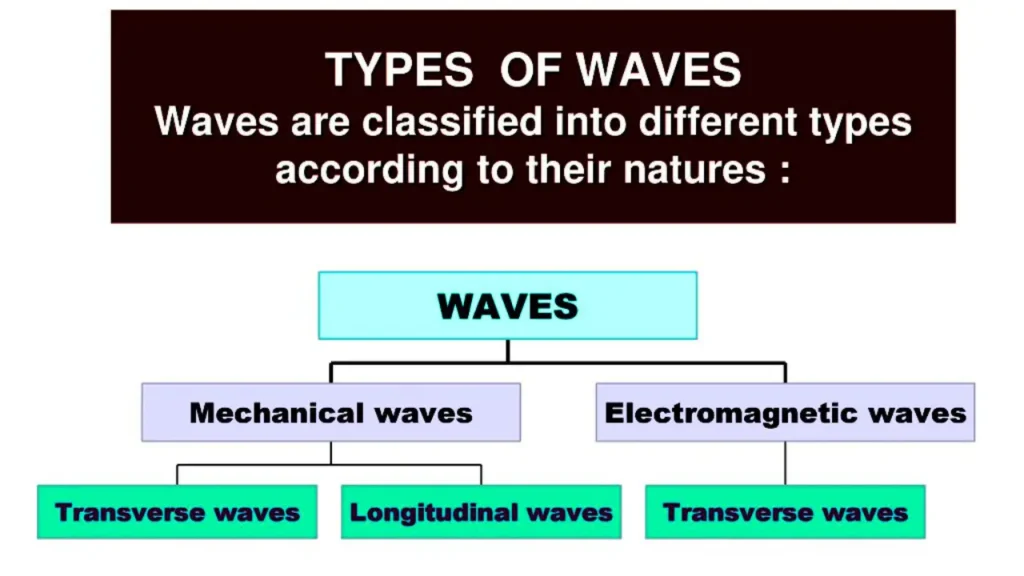
Waves are a fascinating and fundamental aspect of nature, exhibiting diverse characteristics and behaviors. Whether they’re crashing against the shore or traveling invisibly through the vacuum of space, they play a crucial role in shaping our understanding of the physical world.
In this post, we will delve into the characteristics shared by them, explore the distinctions between mechanical and electromagnetic waves, and unravel the mysteries surrounding transverse wave.
Characteristics of All Waves
Before discussing the characteristics of wave, let us discuss what a wave is.
Definition
At its essence, a wave is a disturbance that transmits energy through space or matter. These disturbances can take various forms, from the undulating ripples on the surface of a pond to the oscillating electromagnetic fields that make up light. Understanding the fundamental definition of wave lays the groundwork for a deeper exploration of its intricate nature.
Wavelength and Frequency
Regardless of their type, all waves share common features in their wavelength and frequency. Wavelength is the distance between successive peaks or troughs of a wave, while frequency measures how many waves pass a given point in a specific time.
These two parameters are fundamental to comprehending the nature of different waves and how they interact with their surroundings.
Amplitude
In addition to wavelength and frequency, the amplitude of a wave is a crucial characteristic. Amplitude refers to the maximum displacement of a point on the wave from its equilibrium position.
In simpler terms, it’s the height of a wave from its baseline. Understanding amplitude is essential as it plays a vital role in determining the energy carried by a wave. Higher amplitudes generally signify more energy.
Distinguishing Between Mechanical and Electromagnetic Wave
Nature of Propagation:
Mechanical Waves:
These necessitate a medium to propagate. This requirement involves the physical displacement of particles within the medium. Examples include sound wave traveling through air or water wave rippling across the surface of a pond. The energy in mechanical waves is transmitted through the interaction and movement of particles in the medium.
Electromagnetic Waves:
In contrast, these do not rely on a medium for propagation and can travel through a vacuum. They consist of oscillating electric and magnetic fields. Familiar examples include radio wave, microwave, and light wave. The unique nature of electromagnetic waves, untethered by a medium, allows them to traverse the vacuum of space, demonstrating the versatility of wave phenomena.
To correctly distinguish between mechanical and electromagnetic waves in a table:
| Characteristic | Mechanical Wave | Electromagnetic Wave |
| Medium Requirement | Require a medium (solid, liquid, or gas) | Can propagate through a vacuum |
| Examples | Sound wave, water wave | Radio wave, light wave |
This modified table represents the critical differences between mechanical and electromagnetic wave, enhancing our understanding of their respective natures.
Transverse Wave:
Among the various types of waves, it stand out as a fascinating subset. These are mechanical waves where the particles of the medium move perpendicular to the direction of the wave.
This unique movement creates crests and troughs, forming a characteristic up-and-down motion that distinguishes them from other types.
The defining statement that applies to transverse wave is that the particles of the medium move perpendicular to the direction of the wave. This feature contrasts with longitudinal wave, where particles move parallel to the wave’s direction.
The distinctive side-to-side or up-and-down movement of particles in transverse wave contributes to their intriguing dynamics and their various phenomena.
Conclusion:
In conclusion, waves are an integral part of the fabric of our universe, transcending boundaries and manifesting in various forms. Understanding their common characteristics, differentiating between mechanical and electromagnetic wave, and unraveling the specifics of transverse waves allow us to appreciate the intricate dance of energy that shapes our world.
This comprehensive exploration provides a deeper insight into the beauty and complexity of wave phenomena, fostering a greater appreciation for their role in our everyday experiences.
So, the next time you hear a melody or catch a glimpse of sunlight, remember – you’re witnessing the beauty of waves in action, a testament to the wonders of the natural world.
Also Read:
Where is the coldest place on Earth? (Top 10 Coldest Spots)
Transparent Wood – All you need to know, Its 5 advantages, disadvantages and many more
What type of wave is light?
Transverse wave.
Is sound wave a transverse wave?
No, it is longitudinal wave.
What are the 3 characteristics of all waves?
Wavelength, Frequency and Amplitude.
2 thoughts on “Waves: Unravelling the Characteristics and 3 Types of Waves”